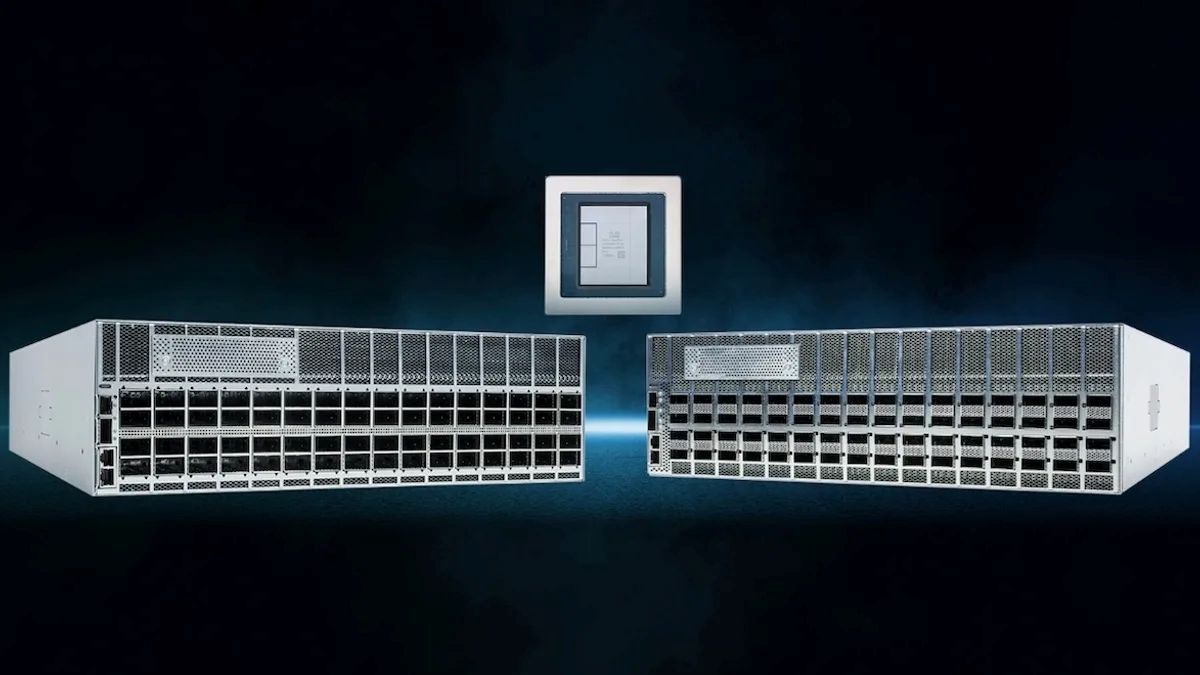Cisco has unveiled the Cisco 8223, the industry’s most optimized routing system for efficiently and securely connecting data centers and powering the next generation of artificial intelligence (AI) workloads.
As AI adoption accelerates, data centers face soaring demand, rising power constraints, and evolving security threats.
“The Cisco 8223 is the only 51.2 terabits per second (Tbps) Ethernet fixed router built for the intense traffic of AI workloads between data centers,” says CISCO.
Cisco has also announced its latest Silicon One innovation – the P200 chip – which sits at the core of the 8223. Together, these innovations empower organizations to shatter bottlenecks and future-proof their infrastructure for the AI era.
“AI compute is outgrowing the capacity of even the largest data center, driving the need for reliable, secure connection of data centers hundreds of miles apart,” said Martin Lund, EVP, Cisco’s Common Hardware Group. “With the Cisco 8223, powered by the new Cisco Silicon One P200, we’re delivering the massive bandwidth, scale and security needed for distributed data center architectures.”
In many of the world’s data centers, AI workloads are stretching power and space limitations. Hyperscalers can’t scale-up (add more capacity into each individual system) or scale-out (connect multiple systems within a data center) any further. This dynamic puts increasing demand on data center interconnects, as the industry must “scale-across” by distributing AI workloads across multiple data centers. Without addressing the connection points between data centers, organizations could face performance challenges, capacity bottlenecks and suboptimal processing that wastes time, power and money. The Cisco 8223 system gives organizations the flexibility and programmability necessary to build these networks, with deep buffering to provide the cross-site security and reliability necessary for crucial workloads.
Power Efficient. Scalable. Programmable. Secure.
Building a future-ready backbone AI network today is essential – one that can meet the power consumption challenges while remaining scalable, flexible and secure. The Cisco 8223 provides customers the capacity to handle surging workloads, the necessary flexibility with fully programmability, and the power efficiency to directly address power consumption challenges.
The 8223 is uniquely:
- Power Efficient: The 8223 is the most power efficient routing system for scale-across networking. It is a deep-buffer routing solution optimized for fixed deployments that offers switch-like power efficiency, directly addressing the high energy demands of AI workloads. As a 3RU system, it is the most space efficient system of its kind. As AI clusters continue to ‘scale-across,’ power and space efficiency will only grow in importance.
- Scalable without Compromise: The 8223 offers industry-leading bandwidth and the highest density of any fixed routing system in the industry. The only fixed routing system featuring 64 ports of 800GE, the 8223 offers unmatched routing performance capable of processing over 20 billion packets per second and scaling up to 3 Exabits per second. It also features 800GE coherent optics support, enabling data center interconnect and metro applications reaching up to 1000km. With the P200’s deep buffering capabilities, the new routing systems can absorb massive traffic surges from AI training, maintaining performance and preventing network slowdowns.
- Intelligent and Adaptable: The 8223 can intelligently adapt to real-time network conditions. With the smart and programmable P200 silicon, it can support new, emerging network protocols and standards without requiring costly hardware upgrades. Networks can remain agile while preventing performance bottlenecks and accelerating the adoption of new features as AI traffic continues to evolve.
- Secure: The 8223 offers protection at all levels – across hardware, software and entire networks. With features like line-rate encryption using post-quantum resilient algorithms, integrated security safeguards and continuous monitoring tools, the 8223 can safeguard against emerging threats. Seamless integration into Cisco’s observability platforms gives customers granular insights into network performance to help identify and resolve issues quickly, ensuring AI data traffic is secure and reliable.
Flexibility – An AI ‘Must Have’
The demands of AI networking aren’t simply growing, but are also constantly changing and evolving. Organizations demand infrastructure that is agile enough to change as business requirements do, and are seeking flexibility in deployment models so they can build networks for their exact needs. The Cisco 8223 will initially be available for open-source SONiC deployments, with IOS XR on the horizon.
In addition to its availability in the fixed 8223 system, the P200 silicon itself will be deployable in modular platforms and disaggregated chassis, offering customers architectural consistency for any size network. The Cisco Nexus portfolio will also support systems running NX-OS based on the P200 in the near future. Cisco is delivering the agility and operational flexibility required for today’s AI infrastructure.
Cisco Silicon One: The Industry’s Most Scalable and Programmable Unified Networking Architecture
Cisco Silicon One is a complete portfolio of networking devices across AI, hyperscaler, data center, enterprise and service provider use cases. Introduced in 2019, Cisco Silicon One is playing critical roles in major networks around the world.
“As AI workloads rapidly outpace the capabilities of traditional data centers, the industry faces new challenges in bandwidth, reliability, and scale. The migration of data centers to remote locations for power access makes ultra-reliable, high-bandwidth interconnects essential. Cisco’s 8223, powered by Silicon One P200, marks a significant step forward, delivering the industry’s first 51.2-terabit fixed Ethernet router purpose-built for secure, power efficient scale-across networking.” – Patrick Moorhead, CEO and Chief Analyst for Moor Insights & Strategy.




